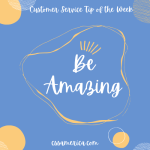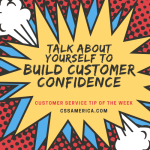
People tend to be drawn to people that they can relate to in life. Steph Curry is not 6 feet 8 inches and 260 pounds, built like granite. He’s about 6 foot 3 inches, but on a basketball court he looks kind of like a guy who you might work with or someone you might see grabbing a burger in a low-key restaurant. He is the most popular basketball player in the WORLD among Millennials, and people can relate to him.
When we are interacting with a customer or a co-worker, it’s not necessarily our goal for that other person to like us. We can’t control their feelings or their perspectives, but it often helps the tone of the conversation, the dialogue, the flow, the patience the other person exhibits if they feel like they can relate to you.
If they are booking a trip, and you have gone to that location before, that’s a point of relating. If they are walking their dogs in the home improvement store and you enjoy pets, that’s a point of relating. If they call you on the phone and you recognize the area code as something familiar, that’s a point of relating. If they talk about their kids or their cat or their home or what excites them or their concerns, those are all points of relating.
Now here’s the key. Address those points of relating in the conversation with the customer. Don’t just notice the location of the trip or the dog or the area code; bring it up in conversation. Don’t just let that comment about the kids or the cat or the home or what excites them pass you by. Bring it up in the conversation. Don’t let those little commonalities of life pass by like a stranger on the street. Take the time to highlight them, and take the time to relate to the other person.
It creates a different tone. It can make the encounter more enjoyable. It may even engender a little bit of goodwill and patience.
Relate.
Signup for FREE Tips! Contact Us More Resources for You Visit Our Home Page























